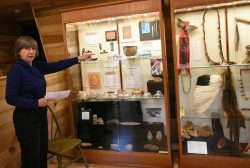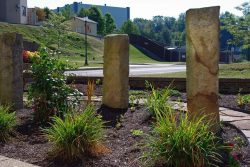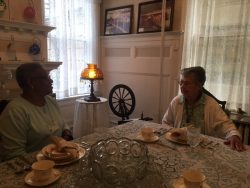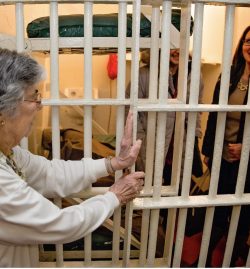Up Close and Personal: History
May 9, 2018In this blog series, Up, Close and Personal, we’re going to answer some of – what I’m sure are- some additional burning questions about places in Marion. We’ve so far explained what the heck the CVB even is and we’ve talked to the living history interpreters at Pricketts Fort. And in this blog, we’ll be taking an up, close and personal look at the people who love Marion County History.
By people who love Marion, I’m talking about those who look deep into the most important aspects of culture and important people: the Marion County Historical Society and the Frank and Jane Gabor West Virginia Folklife Center.
Folklife Center
Pat Musick is the interim director at the Folklife Center, which seems to be the perfect fit for her.
“My father also was a painter, and he did a lot of paintings that were inspired by stories and myths and poetry. So I think I just grew up in that environment,” she said.
Her aunt Ruth Ann Musick was the author of famous West Virginia folklore books, The Telltale Lilac Bush and Coffin Hollow to name a few. Ruth Ann’s brother – Pat’s father – did the illustrations for many of her works.
Aside from a love for West Virginia folklore, Pat said she always fell in love with the Irish folklore – so the other world beings, the fairy beings – and cross-cultural mythology.
She explained that folklore is cross-cultural as similar themes show up in every culture, but each story is also particular to a people. Folklore literally translates as the “knowledge of the people.” And for West Virginia, she said that knowledge has been well preserved, in part by isolation due to geography.
The folklore in West Virginia is diverse because the population of Appalachia is Scot-Irish, but also Italian, German and Welsh. The stories are from a family, not literary stories.
Aside from exploring Ireland, Pat said she has gone to parts of West Virginia and Marion County like Watson and Valley Falls to orient herself in certain folklore stories set in those places. This, she said, is how folklore has helped her to grow.
“That interest in pursuing those areas of the imagination lead you to meet fascinating people and lead you to fascinating places, so I have trekked all over Ireland and the American Southwest and parts of England,” she said.
Getting to know different topography, climate and wildflowers gives a whole new richness to the stories, she added, which brings folklore even more alive.
What’s next for her?
“When she died, my aunt left many more books worth of unpublished folklore that she had collected, manuscripts which are in the archives of the West Virginia Folklife Center here…,” she said, adding that she will follow in her father’s footsteps in illustrating them.
Marion County Museum
At the Marion County Historical Society, the women there deal less with lore and more with artifacts and articles.
Assistant Director Gladys Miller started working there 12 years ago and has never stopped learning.
“Quite frankly, I didn’t know too much about Fairmont. I was raised up in a little town called Carolina. Being girls, we weren’t allowed to run back and forth over town,” she added.
With everything she was learning, she that’s why she has stayed for so long.
“Once I started here and volunteering, I started finding out things about Fairmont. And I just continued to enjoy what I was finding out,” she said.
The most interesting subject she has found is Marion County’s rich black history.
“There are so many black Americans in Marion County that have done so much but no one really knows too much about it,” she said as she shows a book she compiled of those very men and women. “… When I started collecting this and it was getting interesting, like everyday something new. And here I live right in this little county and didn’t know a thing about what more or less our people were doing. Really, I think that’s what kept me here and kept me going.”
For her, staying at the Historical Society has been about trying to teach the younger black generation about the contributions of black Marion Countians.
Gladys’ coworker, Historical Society Guide Betty Andrews, said she stays less for the history and more the people who walk in every day.
After 18 years there, she said she has met some very interesting people and hopes to continue to meet more.
“It’s been a lot of fun. You meet all kind of people from every place. They come in from every place and talk to you and let you know a little bit about themselves. It’s just an interesting place to work.”
As it pertains to the history of the place, one fact sticks out to her.
“I think the most interesting thing is that the sheriff lived here with his children and family and it is connected with the jail. You can go right from his house to jail. … you don’t think that there’s an open connection between the two,” she said.
While she enjoys history, the people are her passion.
There are people that come into the Historical Society who think they don’t care about Marion County history. Betty said, they eventually see something – among all the antiques that fill the place – that attracts them. And that’s where she comes in to do what she loves: teaching the people and hearing their stories.
What’s your favorite story about Marion County?




